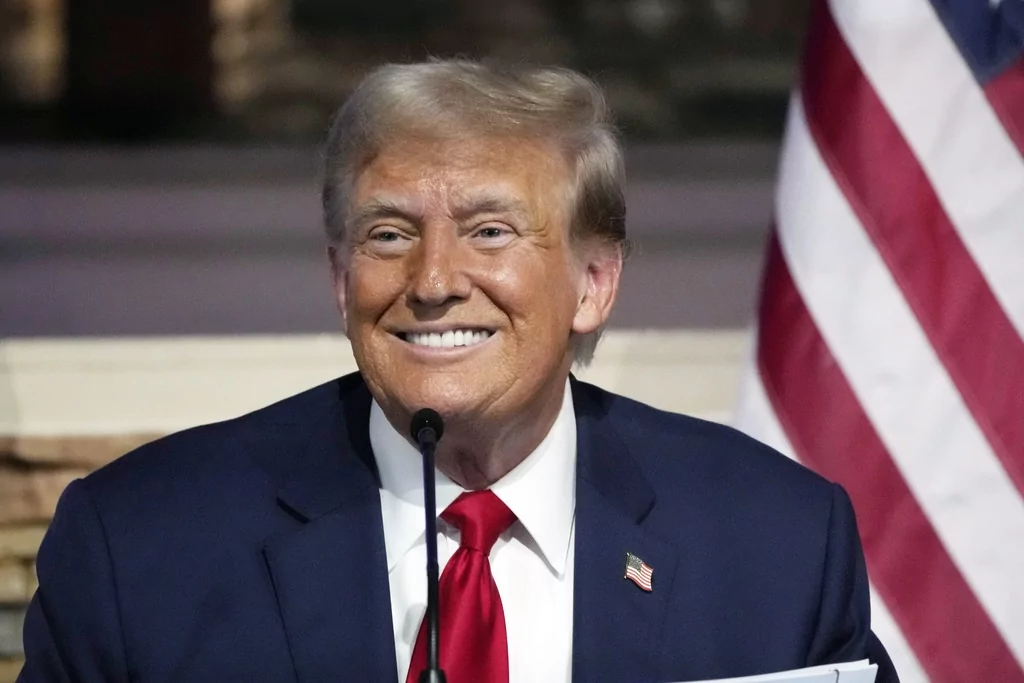

As the Democratic Party melted down over President Joe Biden’s poor debate performance, former President Donald Trump did a surprising thing: He shut up and let the drama unfold without him.
The only public comments on Democratic disarray from Trump’s orbit came Wednesday from his campaign co-chairs, who pointed out anyone Democrats could feasibly nominate would have defended both Biden’s policies and his fitness to continue as president — including, with Trumpian flair, “Cackling Copilot Kamala Harris” (though actual Trump nicknames seldom use alliteration).
So far, the end result of this quieter method has been that Trump has taken control of the 2024 presidential race. He is a slight favorite in polls even against the top Biden replacement candidates.
This strategy was evident on the debate stage itself. Yes, Trump attacked Biden early and often, as much as the CNN debate rules allowed. But the former president was also willing to stand back and let his Democratic successor self-immolate, waiting approximately 20 minutes before explicitly referencing how badly things were going for Biden.
Trump’s third presidential campaign has been a button-up affair, his most disciplined yet. Credit is mainly due to campaign chiefs Chris LaCivita and Susie Wiles. Nevertheless, although Trump remains a thoroughly unconventional and freewheeling candidate, he has played a role in this himself.
In Trump’s stump speech, the transitions from his prepared remarks to crowdsourced ad-libs are less jarring. He has a standard pitch on why Biden’s presidency has been bad and his own first term was good. He regularly recites a nuanced pitch on abortion designed to distance himself from a federal ban while still remaining to the right of the Democrats on the issue, taking credit for the reversal of Roe v. Wade, and acknowledging some Republicans must follow their hearts to a less compromising position.
Trump repeated these lines at the debate. While Biden bungled his response, veering into talk about illegal immigration rather than one of his best issues in the campaign, the exchange did not go poorly for the presumptive Republican nominee. These careful lines might not be sufficient to get Trump through a GOP platform fight over the abortion plank, but it did get him through his debate with Biden.
Even Trump’s attempts to undermine Gov. Ron DeSantis (R-FL) were woven into his standard speech ahead of the primaries. He repeatedly told the story, with little variation, of endorsing DeSantis in 2018 and then watching “that son of a bitch” prepare to run against him for president. This was retired from Trump’s repertoire once DeSantis dropped out of the race and endorsed him after the Iowa caucuses.
Outside factors have contributed to Trump’s more disciplined approach. Cable news networks no longer carry his rallies in full, in an attempt to deny him the free media many in the industry believed they handed him in 2015-16. Trump no longer posts much on Twitter after his post-Jan. 6 ban, preferring his own Truth Social platform instead.
This means Trump’s most unhinged comments are often made in front of audiences that enjoy them rather than voters who might find them off-putting. The media reports on or amplifies some of his perceived gaffes but is selective about how many of his comments get a wide airing. This has sometimes been to his benefit rather than his detriment.
The same was true of the CNN debate. The lack of audience and the networks’ ability to cut off microphones to stop interruptions appeared designed to deny Trump a repeat of any of his signature debate moments from the past. Trump admitted before the debate to having concerns about the lack of audience to read and acknowledged these were the Biden camp’s ground rules.
“What they did, I’m pretty sure, is that they approached me with a debate that I couldn’t take,” Trump told the Washington Examiner’s Byron York last month. “Dana Bash, Jake Tapper, no audience, sitting down, originally sitting down, a dead debate, turn off the mics when you’re not speaking so I can’t interrupt him. … They knew I wouldn’t accept that.”
But Trump did accept it. The rules wound up giving Trump the structure to turn in a comparatively measured performance and avoid a repeat of his first 2020 debate with Biden, which he lost by coming in too hot. This time, the focus was on Biden’s stammering, hoarseness, and frequent inability to complete a thought.
Trump’s time in the courtroom for the New York hush money trial, among other legal proceedings, also let him continue to dominate headlines with limited speaking opportunities, even if he regularly tore through judicially imposed gag rules. Trump has been able to remain the dominant figure in the news, at least until Biden’s debate debacle, without the oversaturation of 2016 and 2020.
CLICK HERE TO READ MORE FROM THE WASHINGTON EXAMINER
To be sure, Trump remains an undisciplined candidate compared to virtually anyone else. He still regularly says things no other serious presidential contender would say and attempts things in long public speeches that nearly any other politician would avoid. He tests unscripted material like a stand-up comic workshopping a new routine.
But it may take only minor adjustments, plus a willingness to cede the spotlight to a flailing opponent, to keep Trump in the driver’s seat a little longer.






